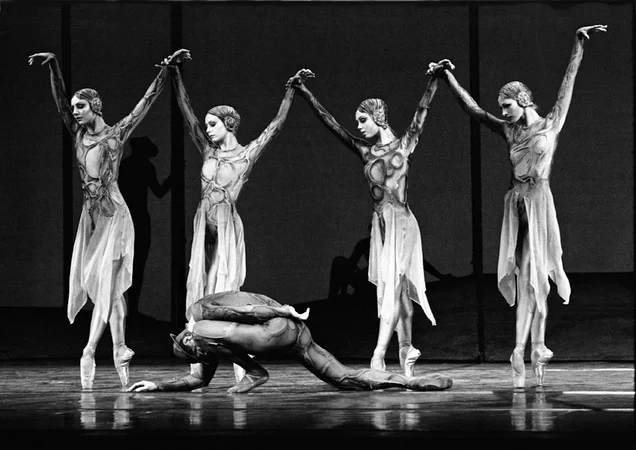MacMillan’s immediate source of inspiration for a First World War ballet was Vera Brittain’s autobiographical Testament of Youth. A poem from it, ‘The War Generation: Ave’ is quoted in the programme book whenever Gloria is performed. The ballet can also be seen as a testament to MacMillan’s Scottish father, who had been gassed in the First World War and who suffered the after-effects for the rest of his life. He never spoke of his experience in the trenches. He died of pneumonia when Kenneth was 17.
Although Poulenc’s Gloria in G is in praise of God in the highest, MacMillan intended it to be an elegy for young lives cut short or blighted by war. It could be seen as the third of his works contemplating mortality, set to vocal music: the earlier two are Song of the Earth (1965) and Requiem (1976). This time, unlike the previous occasions, no objections were raised by the board of the Royal Opera House to his choice of sacred music for a ballet.
all photographs copyright Leslie E. Spatt
MacMillan briefed his young designer, Andy Klunder, to look at photographs and paintings of the Great War, as well as memorial sculpture. The set is sparse, devastated, with entrances and exits over a ramp at the back of the stage. The men resemble soldiers whose uniforms, and flesh, have been torn off; their helmets recall the hats of medieval pilgrims. The women are dressed in silver-grey, with coiled ear-muffs that make them seem ghosts from a far-off past.
The two principal women embody aspects of Vera Brittain and all women who have suffered the loss of loved ones in wartime: one is the fearless girl, the other the woman in mourning. Brittain lost her brother and her lover in the war. The two principal men in the ballet are brothers-in-arms, unknown warriors. One survives the other, only to drop out of sight beneath the ramp on the last notes of the music.
The corps de ballet of women and soldiers serve as ritual celebrants, circling the stage at the beginning and end of the ballet. The four soloists are the personal expression of their anonymous suffering, dancing to the Latin words of the Catholic Mass extolling God’s mercy. The leading man who points at the audience during his last, defiant solo accuses passive spectators of acquiescing in death and destruction. The ballet is about the futility of all wars, not just the 1914-1919 Great War, which it was hoped, in vain, would end all wars.
Gloria was taken into the repertoire of the Stuttgart Ballet in 1983, and has since been performed by companies in the United States, Canada and Japan.
First performance: Covent Garden, London, 13 March 1980
Company: The Royal Ballet
Cast: Wayne Eagling, Julian Hosking, Jennifer Penney, Wendy Ellis
Music: Francis Poulenc, Gloria in G minor
Design: Andy Klunder
Benesh notation score: Diana Curry (1980). Master score
Television: ITV (Granada), 14 November 1982



